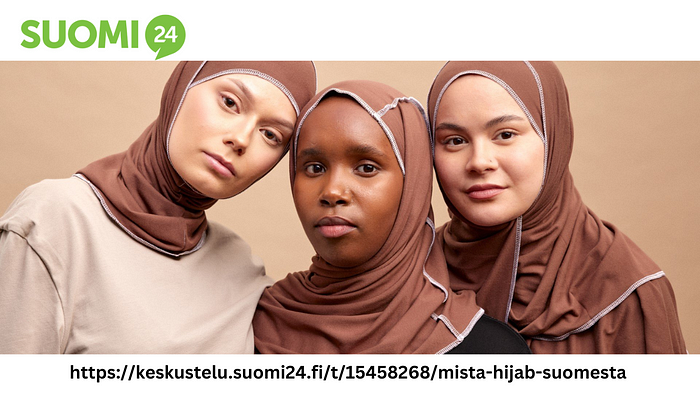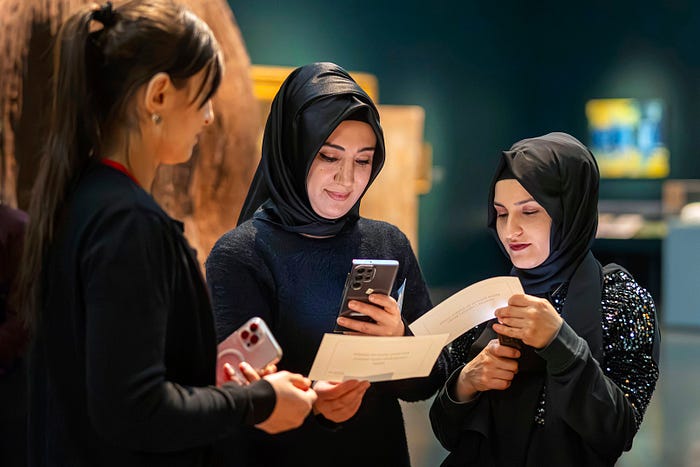"Embracing Diversity: The Role of the Hijab in Finnish Society"

In Finland, the hijab has become a topic of increasing relevance as the country continues to grow more multicultural. The hijab Suomesta, a traditional headscarf worn by many Muslim women as part of their religious practice, is often seen as a symbol of modesty and identity. In recent years, as the Muslim population in Finland has grown due to immigration, the visibility of hijab-wearing women has become more pronounced in public spaces, sparking discussions about integration, identity, and religious freedom.
The Growing Muslim Population in Finland
Over the past few decades, Finland has witnessed an increase in its Muslim population, largely due to immigration from countries such as Somalia, Iraq, and Afghanistan. According to a report by Statistics Finland, the number of Muslims in the country has been steadily growing, with many immigrants settling in cities like Helsinki, Espoo, and Turku. As the Muslim community has become more established, Islamic customs and traditions, including the wearing of the hijab, have become more visible in everyday Finnish life.

The Hijab and Finnish Society
In Finland, like many other European countries, the hijab is sometimes met with a mix of acceptance and misunderstanding. While many Finns appreciate the cultural diversity that Muslim immigrants bring to the country, some are unfamiliar with the significance of the hijab. This can lead to misconceptions about the practice and the women who choose to wear it.
For Muslim women in Finland, the decision to wear a hijab can be deeply personal. Many wear it as an expression of their faith, as the hijab symbolizes modesty and devotion in Islam. Others see it as an important part of their cultural identity, especially in a non-Muslim majority country like Finland. However, the choice to wear the hijab is not always without challenges. Women who wear the hijab may face questions or even discrimination in certain contexts, particularly in the workplace or public institutions.
Legal and Social Implications
In terms of legislation, Finland does not have any legal restrictions on wearing the hijab in public spaces or institutions. Unlike some European countries, such as France or Belgium, which have implemented bans on face coverings in certain public spaces, Finland takes a more liberal approach to religious freedom. The Finnish Constitution guarantees the right to freedom of religion and expression, allowing individuals to practice their faith freely.
Despite this legal protection, there have been isolated incidents where the hijab has been a point of controversy. Some employers, for instance, may be hesitant to hire women who wear the hijab, citing concerns about workplace image or customer reactions. However, Finland’s non-discrimination laws are designed to protect individuals from such bias, and cases of discrimination based on religious attire can be taken to court.
In the education sector, schools in Finland are generally accommodating when it comes to religious attire. Students are allowed to wear the hijab, and there have been few reports of conflicts related to this issue. Finnish schools, like many other institutions, are guided by principles of equality and inclusion, which promote the acceptance of cultural and religious diversity.
The Hijab in Finnish Media and Pop Culture
The representation of Muslim women wearing hijabs in Finnish media and pop culture is gradually increasing. Finnish television, newspapers, and social media have started to feature stories of Muslim women discussing their experiences in Finland, which helps to humanize and demystify the hijab. Through these platforms, Finnish audiences are gaining a better understanding of the motivations and challenges that hijab-wearing women face.
One notable example is Sara Chafak, a Finnish model and beauty queen of Moroccan descent, who has openly discussed her Muslim background. Although she does not wear a hijab, her success and visibility have sparked broader conversations about Muslim identity in Finland.
Social media platforms, particularly Instagram and YouTube, have also become powerful tools for Muslim women in Finland to share their stories. Many hijabi influencers use these platforms to talk about fashion, lifestyle, and faith, helping to create a more nuanced image of Muslim women in Finnish society.

The Role of Finnish Muslim Communities
Muslim communities in Finland play an important role in supporting women who wear the hijab Suomesta. Mosques and Islamic centers, especially in larger cities like Helsinki, Espoo, and Tampere, provide spaces for religious education, community building, and discussions about Islamic practices, including the hijab. These centers often organize events, lectures, and workshops that address issues relevant to Muslim women, helping them navigate life in a predominantly secular society.
Organizations such as **The Islamic Council of Finland (Suomen Islam-seurakunta)** and **The Federation of Islamic Organizations in Finland (FIOE)** offer support to Muslims, providing them with a platform to express their religious beliefs and practices. These organizations also work towards promoting a better understanding of Islam among the wider Finnish population.
Conclusion
The hijab is more than just a piece of clothing; it is a symbol of identity, faith, and personal choice for many Muslim women in Finland. As Finland becomes more multicultural, the visibility of the hijab Suomesta has increased, leading to broader conversations about integration, religious freedom, and social acceptance. While Finnish society generally upholds the principles of equality and freedom, challenges still remain for Muslim women who wear the hijab, particularly in navigating social perceptions and workplace biases. However, through legal protections, media representation, and community support, the hijab is gradually being understood as a legitimate expression of faith and identity in Finland.
As the conversation continues, Finland’s approach to religious diversity will likely evolve, fostering greater inclusion and understanding between communities.


Comments
Post a Comment